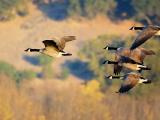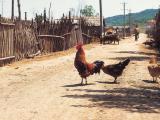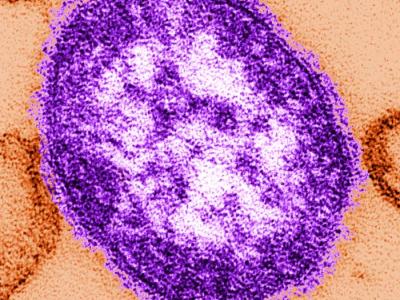As a Canadian teen remains in critical care with an H5N1 avian flu infection in a British Columbia hospital, health investigators said today they haven't identified the source, but have found other clues such as virus changes that may have led to a more severe lower respiratory infection.
At a briefing today, Bonnie Henry, MD, MPH, British Columbia's health officer, said an exhaustive search has found no related illnesses. For now, the main part of the investigation is at a standstill while scientists do ongoing work to examine virus mutations and conduct serology tests to see if any asymptomatic illnesses have occurred.
"Our thoughts continue to be with this young person as they remain in critical condition, and their family," she said.
Henry said the teen, sick since November 2 and hospitalized since November 8, remains seriously ill and requires breathing assistance, but is stable and has shown progress over the past few days.
Closest virus match is to wild geese
Extensive testing of health workers, family and other close contacts, and animals has turned up no further infections. Extensive tests on a pet dog that was sick at the same time were negative for avian influenza, with tests also negative on samples from about 25 animals, numerous environmental samples, and from the family that took care of the dog prior to adoption. Wastewater sampling also found no clues.
Henry said whole-genome sequencing found that the H5N1 virus from the patient belongs to the D1.1 genotype, which is a different genotype than the one that has infected dairy workers in the United States.
Though British Columbia has experienced 54 poultry outbreaks over the past several weeks, phylogenetic analysis by scientists at the BC Centre for Disease Control Public Health Laboratory suggests the patient's sample is fairly distant from the poultry virus and is most closely related—but not identical—to samples from two cackling geese found dead in British Columbia's Fraser Valley in early October.
Phylogenetic findings could hint at an intermediary source to the patient, such as another wild bird or an animal, she said.
Concerns about virus mutations
Though the detection of no other human cases—including farm workers with direct poultry contact—and no transmission among people is reassuring, Henry said the identification of mutations linked to greater adaptation to humans, including enhanced cell-receptor binding and the binding to cells deep in the lungs, is concerning.
She also noted that the virus may have evolved after infecting the patient. The teen's symptoms began with conjunctivitis, then progressed to a severe respiratory illness. Scientists have obtained serial samples from the patient to identify any mutations that have occurred over the course of the infection.
Serology testing of patient contacts is still under way, but so far all tests have been negative.
The recent identification of H5N1 in a US child in California is a reminder that children may be more vulnerable to H5N1 infections, because their immune systems may not have encountered similar viruses before, Henry said, adding that the identification of the virus this week in a California retail raw milk samples is a warning that the virus can turn up in unexpected places.
More outbreaks in US dairy cows, poultry
In other H5N1 developments, the US Department of Agriculture (USDA) Animal and Plant Health Inspection Service (APHIS) today confirmed 34 more outbreaks in dairy cattle, all involving California herds. The state has now reported 436 outbreaks, with the latest outbreaks lifting the US total to 650 dairy herds across 15 states.
APHIS also confirmed two more outbreaks in poultry, one a backyard flock housing 70 birds in North Dakota's McHenry County, and the other a backyard flock of 30 birds in Utah's Salt Lake County.



















